Mesial bite
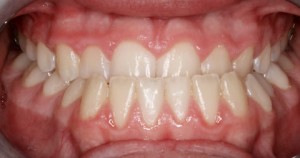
A mesial (or medial) bite is such an anomaly that is characterized by the advancement of the lower jaw forward with closed jaws.
With this type of bite, either the upper jaw is underdeveloped, or a strong development of the lower jaw bone is noted.
In dentistry, the mesial bite is designated by such concepts as “III closure class according to Engle”, “progenic bite”, “anterial bite”, “lower prognathism”, “progenia”.
This anomaly can be combined with an open cross bite.
Externally, the anomaly is manifested by the following symptoms:
- The presence of a massive protruding chin.
- When the jaws are closed, the upper incisors are behind the lower ones.
- The upper lip sinks.
In general, the facial expression of a person with a medial type of occlusion is regarded as angry.
- With a mesial bite, functional changes can be observed: impaired speech and chewing (biting off food).
- The presence of pain, crunching, clicking when opening the mouth and chewing in the temporomandibular joint is characteristic.
The following types of mesial bite are distinguished:

- Deep.
- Open.
- Cross.
Causes
The following factors can affect the development of anomalies:
- Wrong position of the child in a dream.
- The presence of a short frenum of the tongue.
- Diseases that directly affect bone growth and development. For example, rickets.
- The presence of bad habits in a child: prolonged use of a dummy, sucking fingers, toys, etc.
- The long process of changing primary teeth is permanent.
- Birth injury in a child.
- Loss of upper milk teeth ahead of time.
- Uneven erosion of milk teeth in a row.
- Adverse heredity.
- Artificial feeding of the child.
- Putting a brush or fist while sitting under the chin.
- Upper jaw underdevelopment.
- The presence of ENT diseases.
Diagnostics
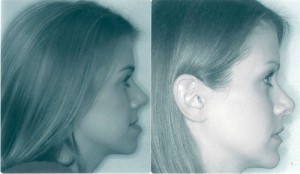
To confirm the diagnosis and assess the condition of the bite, an orthodontist consultation is necessary.
- A face is examined in face and profile.
- Anthropometric indicators are taken.
- Occlusion assessment and functional testing are performed.
- With the help of bite rollers, the degree of severity of the bite is assessed.
- Conducting additional research methods: radiography, tomography, orthopantomography, etc.
- In order to detect impaired functionality, electromyography of the temporal and chewing muscles is performed, and an additional consultation with an ENT doctor and speech therapist is required.
Effects
If the child does not timely correct the bite, then with age the most unpleasant consequences of the anomaly may develop.
Among the complications in adults can be observed:
- The development of periodontal disease.
- Complications of the temporomandibular joint.
- Change in the shape of the face.
- Complications of dental implants and prosthetics.
Timely intervention of the orthodontist and correction of the mesial bite will help to avoid these complications.
Anomaly Treatment
The process of correcting the mesial bite is quite complicated and does not last 1 year.
It is necessary to begin the treatment of the defect at an early age, since it is much easier to correct the bite at the stage of jaw formation than at an older age.
Depending on the problem that causes the development of malocclusion, a specific treatment plan is selected:
- With insufficient development of the upper jaw, stimulation of its growth is carried out.
- And if the bone of the lower jaw is highly developed, then measures are taken to restrain bone growth.
For the treatment of medial occlusion in children are used:
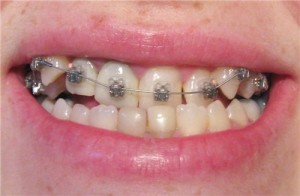
- Orthodontic appliances (mouth guards, trainers, braces), allowing to correct anomalies in a short period of time.
- Myogymnastics.
- Tummy frenum plastic.
- Massage of the maxillary alveolar process.
- The use of vestibular plates, which allow you to wean a child from bad habits.
Correction of the mesial bite in adults requires a longer time, and the correction process may take several years.
Anomaly correction in adults can be done in two ways:
- Using fixed orthodontic constructions.
- Surgically. A simpler way is possible: to reduce the size of the jaw, several teeth are removed. And in more complex cases, surgical intervention and plastic surgery may be required.
Video: “Maxillofacial surgery, mesial bite”
Prevention
The following measures taken in time are effective in preventing occlusion anomalies:
- Breastfeeding a newborn.
- Timely detection and treatment of diseases that can lead to the development of anomalies.
- Monitoring the growth and development of baby teeth In case of signs of any violations, immediately contact a dentist.
- Providing the child with a healthy sleep and his body position in bed.
- Scoliosis prevention and timely correction.
- Timely weaning of a child from a dummy and other bad habits.
Cost
The cost of orthodontic constructions depends on the material and the country of manufacture.
| Orthodontic appliances | Prices (in rubles) |
| Aesthetic braces (for 1 pc.) | from 800 |
| Lingual Braces | from 1000 |
| Children's record (Germany) | from 2000 |
| Children's trainer (Australia) | from 5000 |
Photo: before and after
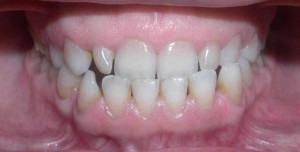 |
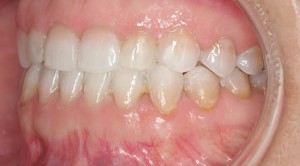 |
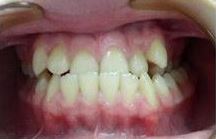 |
 |
 |
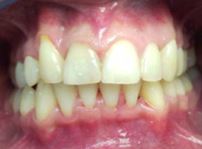 |